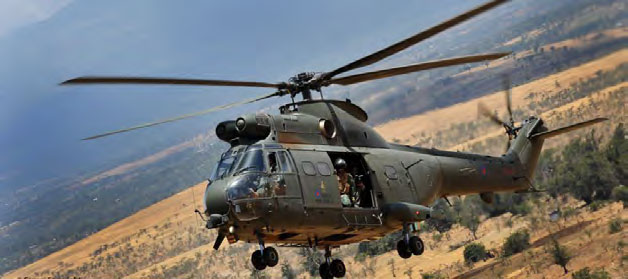Radome
Intelligence / Analysis / Comment
More Western-supplied arms and equipment is now flowing to Ukraine, including artilllery, precision missiles, Gepard self-propelled anti-aircraft guns and loitering kamikaze drones. The VTOL Phoenix Ghost UAV, developed by the USAF under an urgent requirement, is similar to Switchblade ‘kamikaze’ drones supplied to Ukraine but features a six-hour operational endurance. In mid-May the first footage of ground-launched UK-supplied anti-armour Brimstone missiles being used by Ukraine also emerged.
- Meanwhile, on 3 May, UK PM Boris Johnson announced that the country would supply Malloy T150 heavy-lift quadcopter UAVs as part of a £300m aid package.
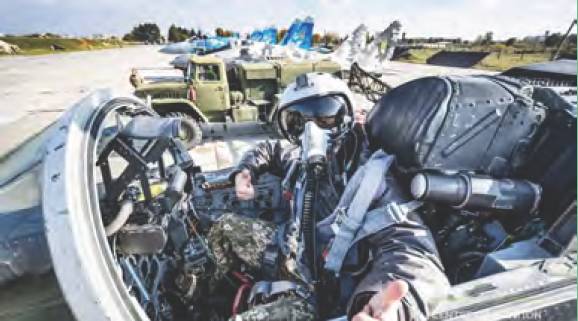 Ukrainian MoD
Ukrainian MoD
The UK’s Foreign Secretary, Liz Truss MP, has said that the West should step up its supply of heavy weapons to assist Ukraine in its fight against Russia, including providing warplanes.
She said the West needed to ‘double down’ on its support, including giving “heavy weapons, tanks, aeroplanes – digging deep into our inventories.”
Previous plans to transfer surplus MiG-29s have remained in limbo due to fears of escalation, although the US has confirmed that Western countries have supplied spare parts to enable the Ukrainian air force to get some of its grounded combat aircraft back in the air.
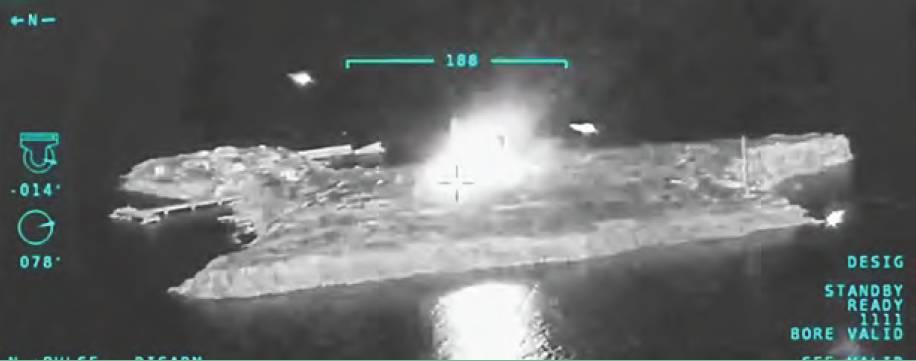 Ukrainian MoD
Ukrainian MoD
Video footage from an armed TB2 UAV released by the Ukrainian MoD has shown a Russian Mi8 helicopter being destroyed as it unloaded troops on the contested Snake Island in the Black Sea. Other TB2 footage (above) also showed a pair of Ukrainian Su-27 Flankers conducting a low-level strike on the island. The TB2 drones have also destroyed a Tor mobile SAM system, as well as two Raptor patrol boats and Russian landing craft as Russia continues to attempt to reinforce its foothold there.
As AEROSPACE goes to press in mid-May, current verified losses through social media photos or video of wreckage, collated by the Oryx OSINT tracker are: Russia: 26 aircraft 41 helicopters, 61 UAVs Ukraine: 20 aircraft 7 helicopters 22 UAVs
- Meanwhile, an AP investigation has found evidence suggesting that 600 civilians were killed in a Russian airstrike on a theatre in Mariupol in March. It is thought that 1,000 people were sheltering in the theatre at the time which served as the city’s main air shelter and was marked with a large sign on the ground outside saying ‘children’ visible from the air.
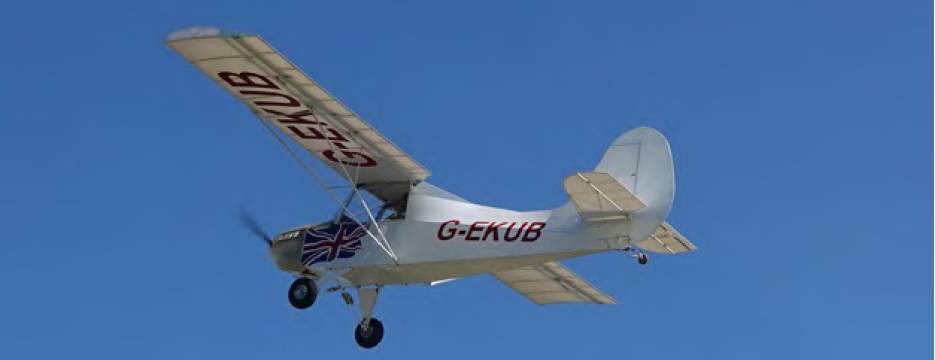 EnabEl consortium
EnabEl consortium
On 21 April, EnabEl programme manager Dr Guy Gratton FRAeS flew an all-electric version of the single-seat Sherwood Kub kitplane on its first flight from Little Snoring, Norfolk. The EnabEl: (Enabling Electrification of Aircraft) project is a partnership between the Light Aircraft Company (TLAC), Cranfield University, Flylight and CDO2 and funded by Innovate UK through the Future Flight Challenge.
The US Federal Aviation Administration has revoked the licences of pilots involved in two separate aerial stunts. In the first instance, it revoked the licence of a pilot and YouTuber Trevor Jacob who allegedly staged an in-flight emergency and parachuted from a 1940’s Taylorcraft aircraft over California in order to make a YouTube video.
In the second instance, on 12 May, the FAA revoked the licences of both pilots who were involved in a failed Red Bull Plane Swap livestream aerial stunt, where they both attempted to skydive between separate Cessna 182s. Chief pilot Luke Aikins admitted that he had continued with the aerial stunt, despite the FAA refusing to grant him an exemption.
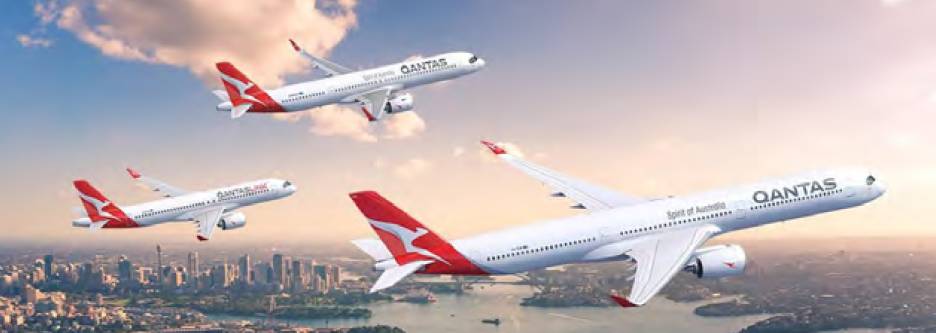 Airbus
Airbus
Qantas Group has confirmed that it will order 12 Airbus A350-1000s, 20 A220s and 20 A321XLRs as part of its fleet regeneration. The A350-1000 was selected following an evaluation, known as Project Sunrise, and will enable the carrier to operate the world’s longest commercial flights. These will include linking Sydney and Melbourne with destinations, such as London and New York non-stop for the first time ever. Featuring a premium layout, the A350 fleet will also be used by Qantas on other international services. The A350-1000 is powered by the latest-generation Trent XWB engines from Rolls-Royce.
Following a ruling on 18 April, the majority of US airlines have lifted mandatory rules for the wearing of Covid-19 masks on flights. Airline employees no longer are required by law to wear masks, along with passengers, although airlines are still recommending that passengers wear masks. Meanwhile, from 16 May it will no longer be mandatory for passengers to wear Covid-19 masks in airports and on flights in Europe.
The guidance, from aviation regulator EASA and European Centre for Disease Prevention and Control (ECDC) also says that airports can drop distancing measures if these cause bottlenecks themselves. However, regulators also said that airlines should continue to promote the use of facemasks and safe hygiene.
In a bid to stave off a looming pilot shortage crisis, US regional carrier Republic Airways has requested an exemption to allow pilots to begin their careers in the cockpit after completing 750 hours. Since 2009, the US FAA has required would-be commercial pilots to complete 1,500 flight hours before they can start with airlines.
The rationale is that former military pilots wanting to transition to a commercial pilot career in commercial aviation are already given an exemption to start flying commercially under a restricted ATPL. Republic is asking that pilots who graduate from its rigorous closed-loop training programme are granted the same exemption.
Boeing announced on 5 May that it was moving its global HQ from Chicago, Illinois, to Arlington, Virginia. The company also plans to develop an R&D hub in Northern Virginia to “harness and attract engineering and technical capabilities.” Boeing says that development at the new hub will focus on cyber-security, autonomous operations, quantum sciences and software and systems engineering.
- Meanwhile, it has emerged that the US FAA has asked Boeing to send revised certification documents for resuming 787 deliveries after the original ones were incomplete. Deliveries of 787s have been paused for a year due to extra inspections and repairs.
 ATR Aircraft
ATR Aircraft
The ATR42-600S STOL variant performed its maiden flight from Francazal Airport near Toulouse on 11 May. Prior to conversion, the airframe served as the prototype ATR 42-600 but it has been adapted to be able to operate from runways as short as 800m (2,625ft). Modifications have included the reinforcement of the rear fuselage, installation of autobraking and ground spoiler systems, as well as associated multifunctional computer systems. The installation of the new, larger rudder is planned later this year after initial flight tests.
 Royal Mail
Royal Mail
The UK’s postal service, the Royal Mail, has announced ambitious plans to expand its drone delivery services for remote regions, adding 50+ new routes over the next three years and a fleet of 500 drones. The service has already been trialling Windracer drones, which carry up to 100kg of letters and parcels, on four routes in the UK over the past 18 months, including the Isle of Mull, Isles of Scilly, the Orkney Islands and Shetland Islands.
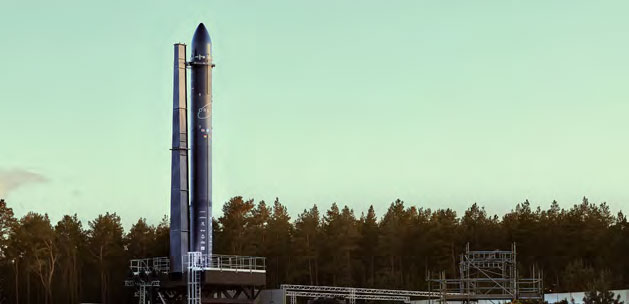 Orbex
Orbex
UK vertical space launch company Orbex has unveiled the first full-scale prototype of its Prime rocket, on a test stand in Scotland. The 62ft long Prime launcher, which is intended to be reusable and features 3D printed engines with renewable biofuel, is undergoing ground testing at Kinloss, with launches to take place at Space Hub Sutherland.
